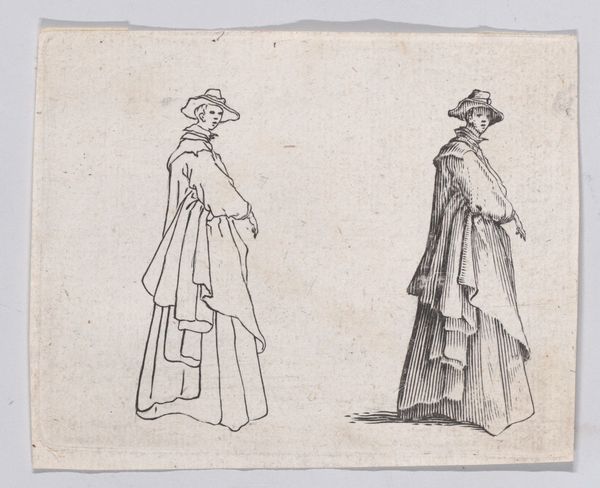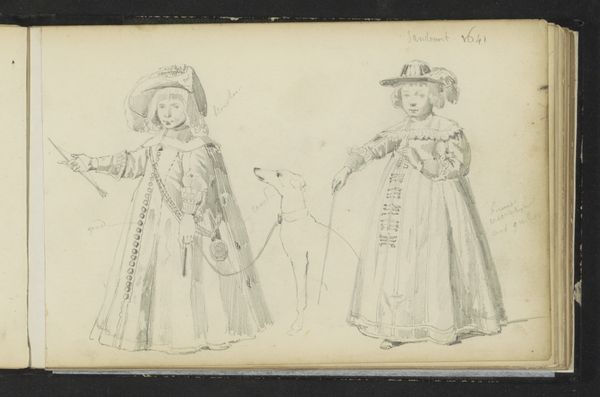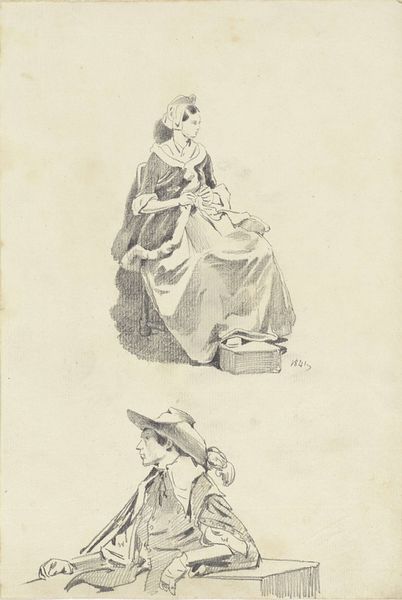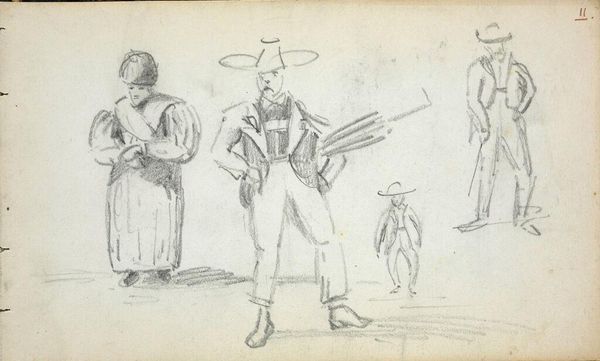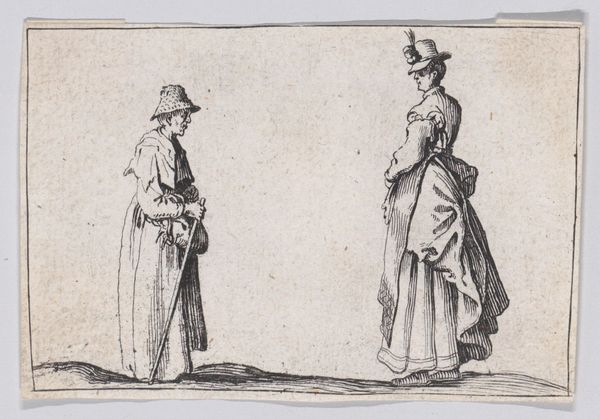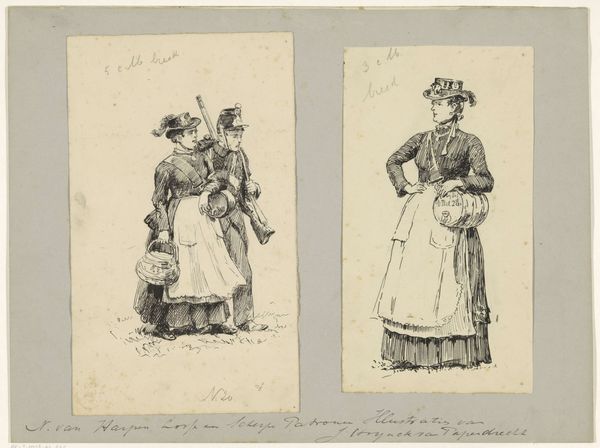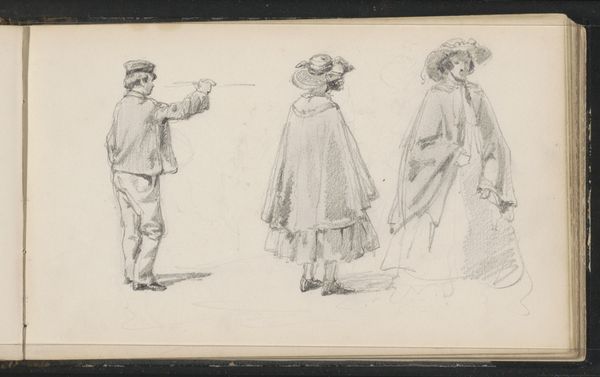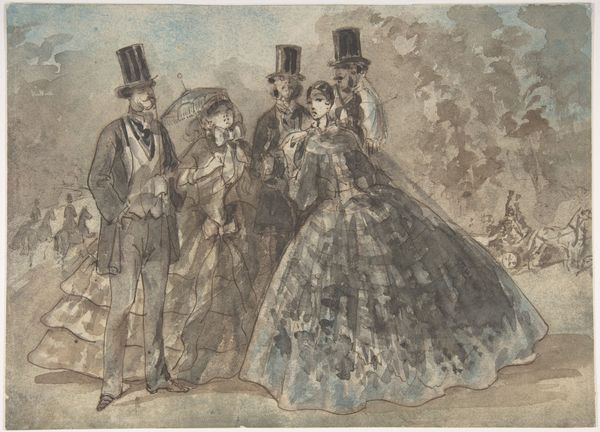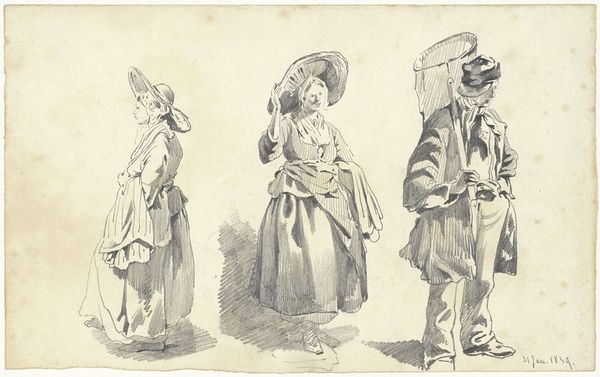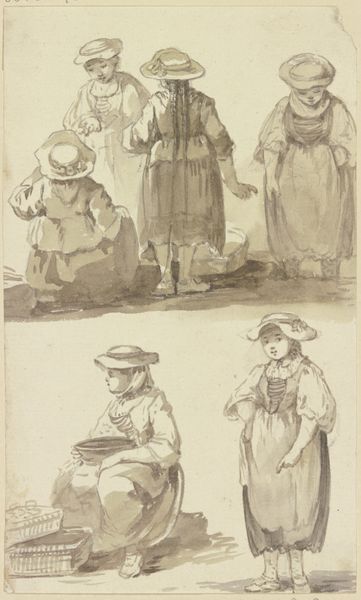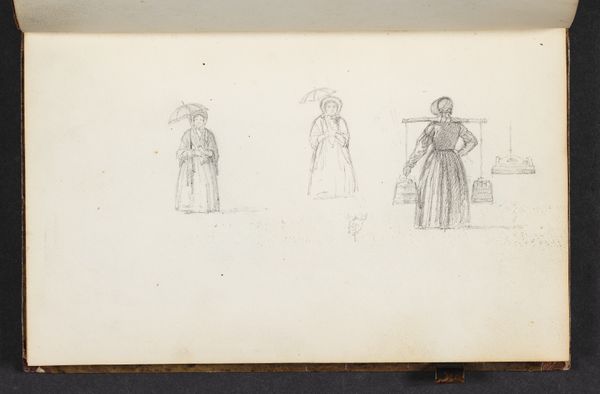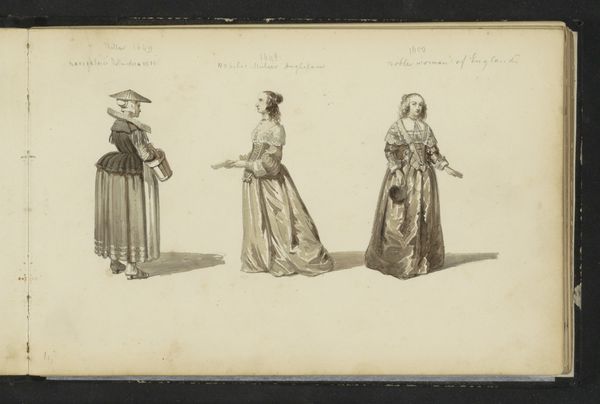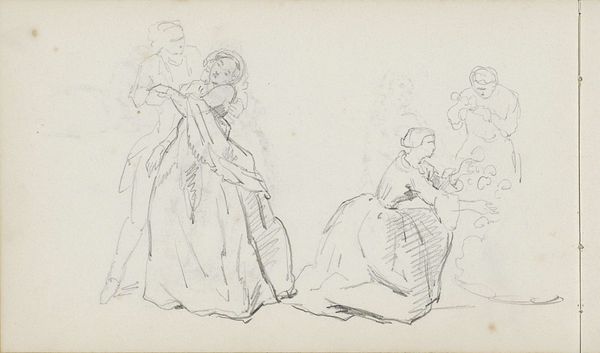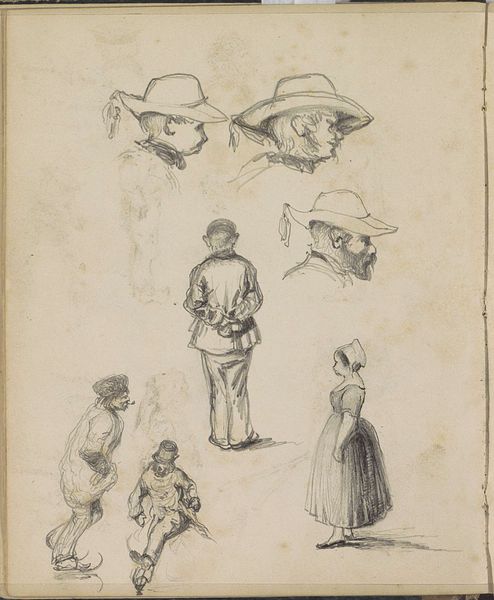
drawing, print, pencil
#
portrait
#
fashion design
#
drawing
#
underwear fashion design
# print
#
fashion mockup
#
fashion and textile design
#
fashion based
#
historical fashion
#
romanticism
#
pencil
#
men
#
wedding dress
#
fashion sketch
#
clothing design
#
bridal fashion
Dimensions: 7 7/8 x 12 5/8 in. (20 x 32.1 cm)
Copyright: Public Domain
Editor: Here we have Wilhelm von Kobell's "Studies of Horsewomen," created sometime between 1780 and 1854 using pencil and printmaking techniques. I find the almost ghostly quality of the figures against the blue paper really striking. What stands out to you in this piece? Curator: The piece reveals much about the means of producing fashion and, by extension, class. Consider the paper itself – its color suggesting it wasn’t the cheapest stock. The artist documents specific clothing styles, focusing on the elaborate sleeves and fitted bodices. These were commodities – evidence of specific material processes, tailored by skilled labor. Editor: That's fascinating. So you see this less as portraiture and more as a record of the clothing industry? Curator: Precisely. These "studies" were likely patterns, or records of them, for dissemination and potential consumption. Notice how the figures lack individual character; they are vehicles for displaying fashionable silhouettes. What does that tell us about who would commission and use such an image? Editor: It implies the target audience was interested in purchasing the *idea* of fashion more than celebrating individual women. This also connects it with practices of labor and modes of display within garment production. Curator: Exactly! This wasn't just 'art'; it was a step in the chain of material production and consumption within a very specific social context. And think about who could afford these garments. The "horsewomen" suggests elite leisure. The image connects directly to economies of time, consumption and display. Editor: I never considered the drawing's purpose in the cycle of fashion production and consumption. Thanks to your interpretation, it suddenly makes more sense. Curator: Thinking materially reframes art history from being only about aesthetics to also focusing on the socio-economic systems underpinning what and how things were made, viewed, and valued.
Comments
No comments
Be the first to comment and join the conversation on the ultimate creative platform.
